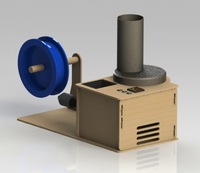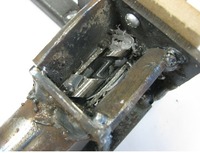Some months ago 3D Systems made the unusual appointment of artist will.i.am as their Chief Creative Officer. Now we see the first fruit from that move: the EKOCYCLE personal 3D printer.
Read More
Some months ago 3D Systems made the unusual appointment of artist will.i.am as their Chief Creative Officer. Now we see the first fruit from that move: the EKOCYCLE personal 3D printer.
Read MoreA new Instructables describes how one maker designed and built a working 3D printer using, well, junk.
Read MoreWe’re checking out a new product from UK-based OmniDynamics: the Strooder, which converts plastic pellets into 3D printable filament.
Read MorePlastic recycling, while seemingly a good idea, has apparently had a difficult time. Dave Hakkens, a student at the Design Academy Eindhoven, has created an inexpensive way to do it yourself.
Read MoreFabraft, a Taipei-based design company has combined 3D printing, trash picking and a bicycle to create something very unusual.
Read MoreIn a study recently released by the Michigan Technological University (MTU), Joshua Pierce and his group have found that recycling commonplace plastics into 3D printing filament consumes less energy than traditional recycling.
Read More We missed this one earlier this year, but it's still a terrific idea: The Filabot is a "plastic filament maker". The idea is straightforward, obvious when you think about it - and necessary.
We missed this one earlier this year, but it's still a terrific idea: The Filabot is a "plastic filament maker". The idea is straightforward, obvious when you think about it - and necessary.  We're reading a piece on GearFuse that reviews a short video of folks designing and printing some very cool salt and pepper shakers - but they say some things we disagree with:
We're reading a piece on GearFuse that reviews a short video of folks designing and printing some very cool salt and pepper shakers - but they say some things we disagree with:But should we be at least slightly concerned about the way 3D printing seems to make plastic crap safe for hipsters? A given unit of ABS plastic requires about twice its weight in petroleum to produce. I have two words for you, young person: carbon credits.
 The opposite of a 3D printer would be a recycling machine. In other words, there should be a way to collect leftover material (or even leftover objects) and convert them back into a medium suitable for feedstock back into a personal manufacturing device for creation of new objects.
The opposite of a 3D printer would be a recycling machine. In other words, there should be a way to collect leftover material (or even leftover objects) and convert them back into a medium suitable for feedstock back into a personal manufacturing device for creation of new objects. 



